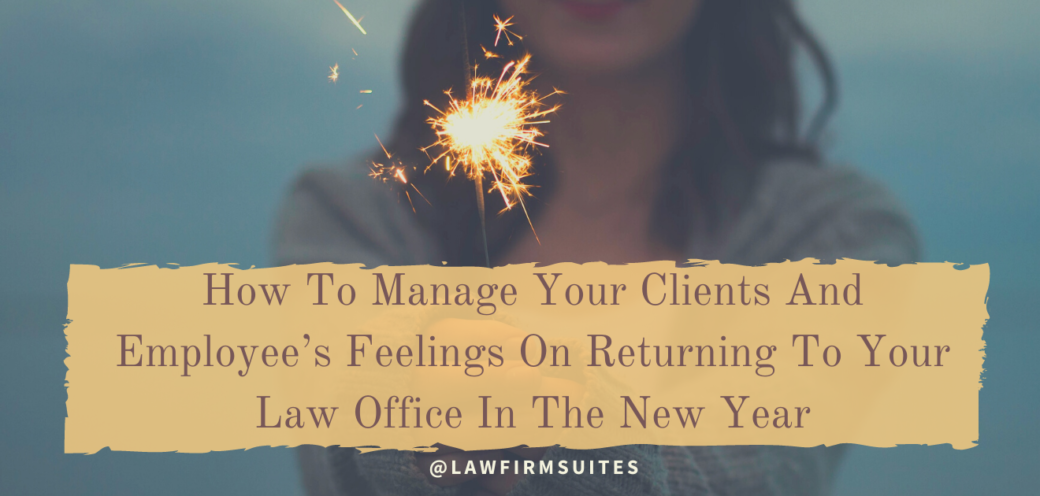As we approach the new year, the thought of re-opening your law office for both your employees and your clients can seem overwhelming. While there is no 100% way to safeguard against COVID-19 at the office (until there is a vaccine or course), there are sensible and workable measures you can take to make everyone feel safer.
So the question everyone is asking is: How do you make sure everyone feels comfortable and safe when returning to the office?
Plan for emotions and opinions.
Remembering the stress that your clients and employees experienced once the virus took over is key. It should come as no surprise that some people will experience similar emotions when they come back to the office. So operate with empathy.
Working from home was difficult for a lot of people at first, but eventually they got used to a new rhythm and the absence of a commute. Even though some of us missed office life and our coworkers tremendously, these new routines will be missed as well, especially since more and more people will start entering the office and subways again.
Some clients might have strong emotions about having to come into the office for simple consultation or conversation because they have gone months without being in a small office or conference room with a lawyer or anyone for that matter.
These factors are a recipe for an unsure, complex, or even moody office environment.
To handle this you need to be sure to ask your team members what they are feeling and to get their opinions on what is going well and what needs re-addressing in terms of managing your office. Reassure people that it’s normal to have ups and downs as they enter a new phase. As for your clients, offer to use technology for virtual consultations instead of meeting in the office. Interacting with potential clients over the phone protects everyone. Some options include Skype, Facetime, and Zoom. For even more information on improving your virtual meetings check out this article.
Create and share a detailed reopening plan
The logistics of restarting the office are more complicated than shutting it down. There is no button to push that returns everything back to “normal.”
Your law office will need to be reconfigured to adhere to social distancing and disinfecting requirements. For example, you may not have as much room for all of your employees depending on how many people you need to fit in a specific space. So you might need to limit the number of staff members and visitors to your office at any given time. Also, depending on where you live, your local government might require you to incorporate temperature monitoring and ask people to wear masks.
As the leader of your law office, you need to be up to speed on all of these new procedures so you can be a role model to your employees and clients.
You should explicitly talk about the new requirements, post them around the office and even email them to all your employees and clients so everyone is up to speed on what needs to happen. This will also help everyone to stay accountable.
Restore Productivity and Help People Stay Busy
Going back to commuting, earlier alarms and everything else is going to take a toll on everyone’s feelings towards coming back into the office, especially after establishing a solid home routine.
If you can help keep your clients and employees busy, this will help to ease their fears and speed up the transition of getting back to work in the office. Here are some strategies you might want to try:
- Be flexible with work hours for the first few weeks
- Provide employees with a list of productivity resources to get them back to their routine
- If their job allows it, let employees work remotely for longer
- Offer to add a few remote work days each week to an employee’s contract
Ultimately the major goal of returning to work during the unsettling COVID-19 era is to get employees back to work with as little interruption as possible. To accomplish this, make the office feel as normal as possible.
For example, ensure employees have all the equipment and supplies they’ll need to get right to work on their first day back. Keep up with workplace rituals if it’s safe to do so (e.g. signing birthday cards, dress-up/costume traditions, choosing an employee of the month). And most importantly have patience and empathy.


